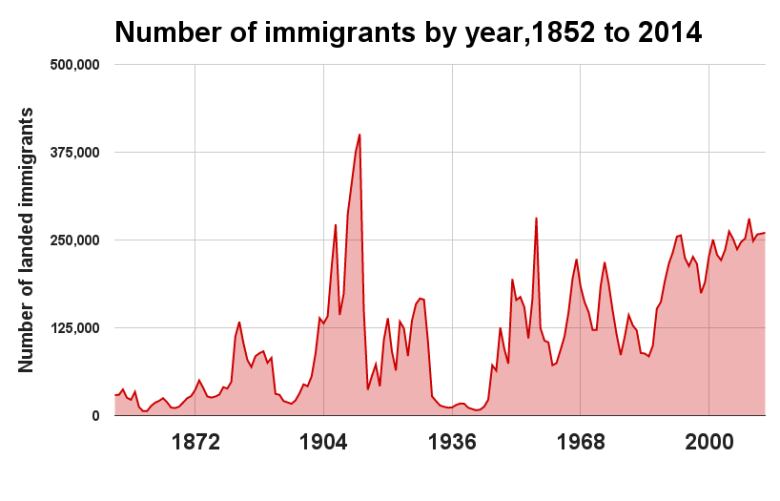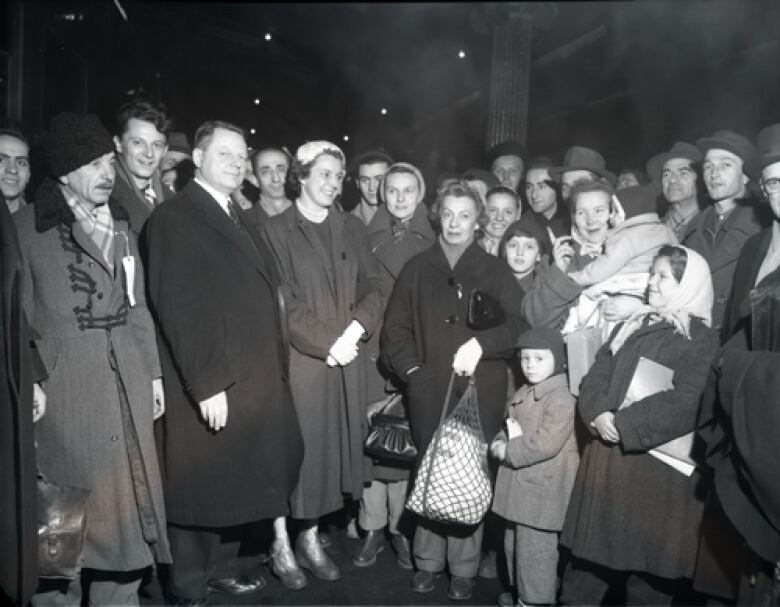Immigration numbers in Canada strong but not compared to a century ago
More than 1 in 5 Canadians today born abroad, Statistics Canada report shows

While the number of immigrants making Canada their new home has been high over the past decade, only recently has the proportionof foreign-born citizens matched levels seen nearly a century ago.
The proportion of Canadians born in foreign countries hovers around 22 to 23 per cent today, according to Statistics Canada projections.The 1921 census pegged the proportion of landed immigrants at 22.3 per cent.
- Growth strategy for Atlantic provinces includes immigration boost
- Liberals shift immigration focus to family reunification, refugee resettlement
Last week, the country's statistics agency released a feature report tracking immigration volumesin Canada since before Confederation and trends dating back to the 1871national census.
Immigration fluctuates wildly
From a low of 6,300 in pre-Confederation daysto a record high of 400,900 in 1913to today's average of approximately 250,000 per year, the number of immigrants settling in Canada has been closely linked to world events, the economy and government policy, the report shows.

A massive wave of immigrants beforethe start of the First World War a time when immigration bumped the country's population by around five per cent per year is attributed largely to such events as the Klondike Gold Rush, new developments in dry farming and a concertedeffort by the federal government to promote immigration and populate Western Canada, according the 1970 Report on the Royal Commission on Bilingualism and Biculturalism.

Trend toward increasing diversity
In 1961, more than 90per cent of foreign-born immigrants were from the United Kingdom, Europe or the United States, with less than two per cent from Asiaor Africa. A major overhaul offederal immigration legislation and regulations ushered in a new era of multiculturalism in the country, the report states.


Results from the 2011 National Household Survey show that more than 50 per centof foreign-born Canadians now hail from Africa and Asia, while the proportion of European and U.K. immigrants has fallen to nearly 30 per cent.

Looking ahead
Statistics Canada's most recent projections on the diversity of the Canadian population to the year 2031 shows the trend is likely to continue, in part owing to persistently low fertility rates among Canadians. The analysis projects that by 2031, between 26 and 27 per cent of all Canadians will have been born in a foreign country, the majority (64.9 per cent) in Asia and Africa.
The report also notes that while the Canadian population as a whole isincreasingly becomingdiverse, the change is not occurring at the same rate in every region in the country. While large metropolitan areas such as Montreal, Toronto and Vancouver are absorbing most newcomers into their communities, the change in population makeup has been relatively modest elsewhere in the country.
Statistics Canada: 150 years of immigration in Canada, report of Royal Commission on Bilingualism












_(720p).jpg)


 OFFICIAL HD MUSIC VIDEO.jpg)
.jpg)



























































































